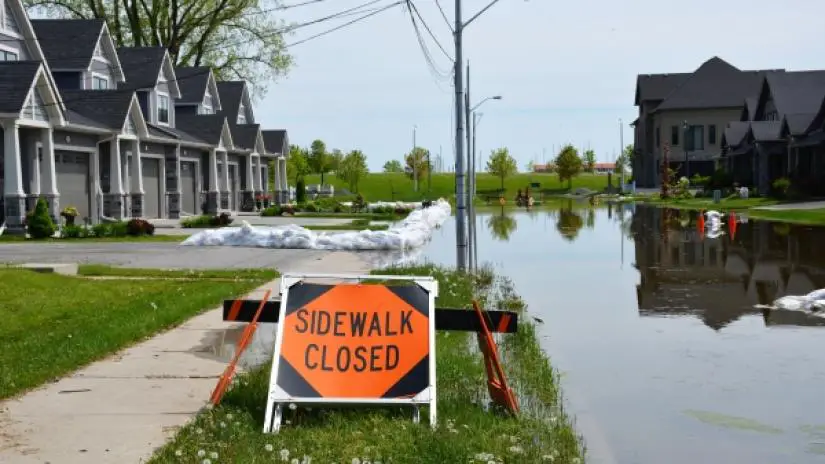
Professional sewage backup cleanup is essential for health and safety. Rainbow Restoration highlights some key considerations:
|
The sewer has invaded your house, and the smell is bad. Whether the sewage backup was caused by a clogged pipe or damage to the sewer line, you need it to be cleaned up as soon as possible. Calling in professionals is the best way to minimize the damage to your property and keep your family safe from harmful bacteria and viruses in sewage.
What Causes a Sewage Backup?
The most common reason for a sewage backup is improper disposal of grease and single-use items, such as paper towels and wipes, that clog the pipes. Excessive rain, aging and cracking pipes, tree roots, or chemical drain cleaners are other elements that could damage the sewer line and lead to a backup. If you’re dealing with stubborn clogs or need to have damaged pipes repaired, a trusted plumber like Mr. Rooter Plumbing can help.
Related Topic: 5 Ways Flood Damage Can Affect Your Home or Business
The Danger of Raw Sewage in a Home
Not only is sewage unpleasant, but contact with it can also prove very harmful. The resulting infection could range from a small rash to a serious illness. These are just a few of the harmful bacteria and viruses that are often present in sewage.
- Salmonella. These are particularly hardy bacteria that can survive outside the host, making the associated illnesses all too easy to transfer. Salmonella causes gastroenteritis, typhoid fever, and paratyphoid fever.
- E. coli. E. coli are bacteria known for causing food poisoning. E. coli infections come from unhygienic preparation of food or contact with contaminated water, such as sewer water.
- Parasites. Cryptosporidium is a protozoan parasite that is present in sewage. Although a healthy person may only experience diarrhea from infection, those with existing health conditions or immune deficiencies may experience something more severe.
- Adenovirus. Common in sewage, this virus causes respiratory infections. Pneumonia, croup, and bronchitis are commonly caused by adenovirus.
- Asphyxiation. Breathing sewer fumes can also be harmful. Common gases that mingle in sewer gas include methane, ammonia, hydrogen sulfide, carbon monoxide, sulfur dioxide, and nitrogen oxide. All these are harmful to humans who inhale them, and can compromise the air quality of the whole house.
What Does Sewage Backup Cleanup Entail?
You have to be careful when dealing with sewage because even brief contact—whether by skin or through the air—can be harmful. That’s why sewage cleanup experts always wear special gear that protects their skin and eyes. They isolate the space, pump out the water to minimize contamination, and thoroughly sanitize and dry everything within 24 to 48 hours.
If raw sewage is left in a home any longer than a day or two, the fumes are likely to contaminate other rooms and cause problems such as mold and water damage. Experienced restoration pros like Rainbow Restoration® know how to check for those problems during the cleanup process and mitigate them immediately.
Due to the complexity and riskiness of this process, homeowners should not attempt to clean up a sewage backup on their own—especially if it’s a large spill and has contaminated more than one room.
How to Prevent Sewage Backup in a House
The best way to deal with sewage backups is to not have to deal with them. With the help of an excellent plumber, here’s how to significantly reduce the chance of a sewage backup in your home:
- Install new pipes. Older sewer pipes are prone to wearing down and cracking. Tree roots can also grow into pipes, disrupting the proper flow of sewage. Upgrade your pipes before small issues turn into major ones.
- Keep clear drains. The best way to keep your drains clear is to develop good habits for disposing of various items in the trash—not your drains. Use the garbage can for things like grease, paper towels, wipes, and feminine products.
- Avoid chemical drain cleaners. Clogs happen. When they do, avoid using chemical drain cleaners, which are harsh on the pipes and can weaken connection points. Instead, opt for natural drain cleaners like white vinegar, baking soda, and hot water. Your pipes will thank you.
- Install a backwater valve. Installing a backwater valve, a.k.a. backflow preventer, is a great way to ensure that the sewage from your house flows in one direction—out. Even if the city sewer lines get overwhelmed by heavy rain, your house will be safe from a backup of sewage.
- Don’t connect black water lines with sanitary lines. This type of plumbing setup is illegal, but that doesn’t mean some homes don’t have it. Black water is the wastewater from your dishwashing, handwashing, or toilet flushing; it should never be connected to your clean water line. Make sure you don’t have any French drains, sump pumps, or other flood controls connected to your sanitary sewer. If one backed into the other, your clean water would be compromised.
Related Topic: How to Clean a Smelly Drain
How Much Does Sewage Backup Cleaning Cost?
The cost of cleanup depends on the work involved. Because different size spills cause different levels of damage to the property, they must be individually estimated. Your insurance coverage will likely vary based on the situation, as some backups might be considered flooding.
To keep it simple, you can have the cleanup and full-service reconstruction done by one company. Leave it to your local Rainbow Restoration to restore your home—and even handle the insurance-related communication for you. We have your back in any unfortunate backup situation! Just request an appointment online or give us a call us.
